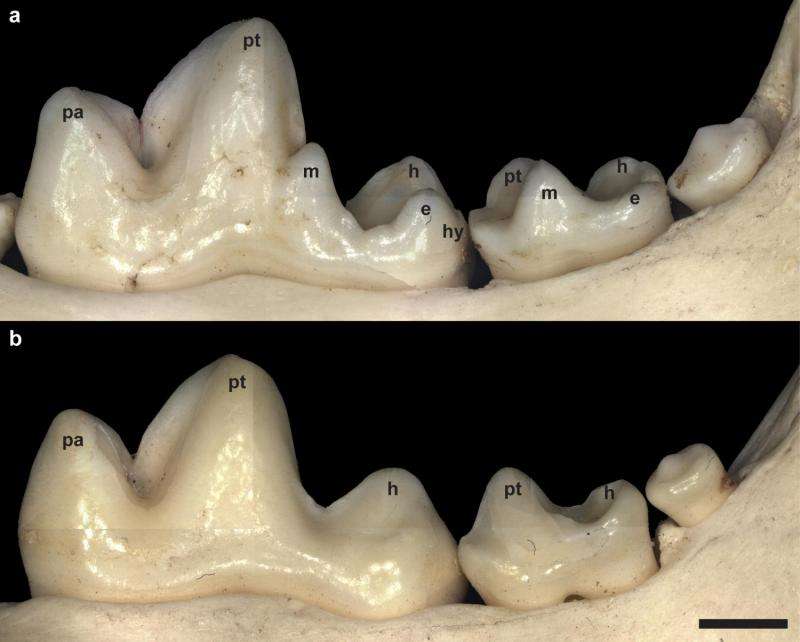FOXI3 gene is involved in dental cusp formation

Hairless dog breeds differ from other dogs not only by lacking a coat, but also in the number and nature of their teeth. Scientists at the Max Planck Institute for Evolutionary Anthropology in Leipzig and the Friedrich Schiller Universität Jena studied the skulls and teeth of pedigreed hairless dogs from the collection of the Phyletisches Museum of the University of Jena. Thus, they furthered our understanding of the involvement of the FOXI3 gene in the development of teeth - not only in hairless dogs, but potentially also in other mammals including humans.
Hairless dogs such as the Chinese crested dog or the Mexican hairless dog are among the oldest dog breeds worldwide and already attracted the attention of the great naturalists Carl Linnaeus and Charles Darwin. The missing hair of these dog breeds is the result of a mutation of the forkhead box I3 gene (FOXI3) which belongs to a transcription factor gene family and is also, among others, involved in tooth development.
By studying a historical skull collection of hairless and coated dogs, a team led by Kornelius Kupczik of the Max Planck Institute for Evolutionary Anthropology and Martin S. Fischer of the Friedrich Schiller Universität Jena found that hairless dogs are almost completely missing their replacement teeth (i.e., incisors, canines and premolars). The molars, however, were present. It was also remarkable that the deciduous premolars and permanent molars of the hairless dogs repeatedly lacked specific lingual cusps. On the basis of DNA sampled from the more than 100 years old dog skulls of the museum's collection in Jena, the researchers demonstrated that these morphological findings are also associated to FOXI3 gene Variation.
The preserved original skulls and taxidermy samples of hairless dogs date back to the former director of the Phyletisches Museum, Ludwig Plate, who, in the early 20th century, conducted an experiment of crossbreeding hairless and coated dogs. His article on the study already stated that the hairless individuals showed a partially lacking dentition. "Our new study impressively demonstrates the immense value of scientific collections for research purposes," says Fischer.
Interestingly, the molar phenotype of the hairless dogs can be found in wild forms of living and extinct carnivores, and the molars of humans and great apes also show varying expressions of the lingual cusps. The researchers from Leipzig and Jena therefore suggest that FOXI3 may be of general importance in mammalian tooth development. "It is therefore possible that this gene may have played a role in evolutionary changes of human tooth morphology as well," says Kupczik.
More information: Kornelius Kupczik et al. The dental phenotype of hairless dogs with FOXI3 haploinsufficiency, Scientific Reports (2017). DOI: 10.1038/s41598-017-05764-5
Journal information: Scientific Reports
Provided by Friedrich Schiller University of Jena

















